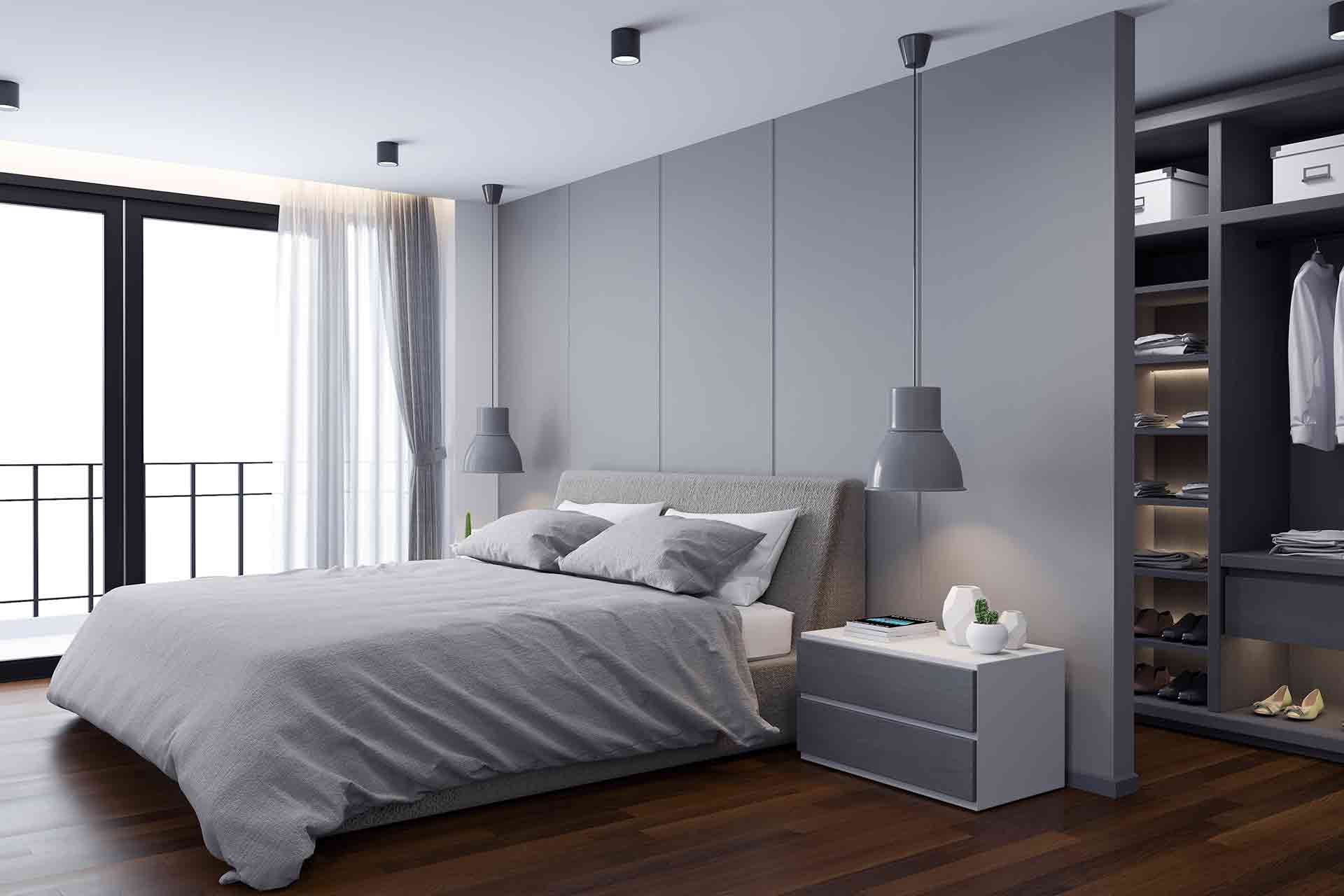The Appeal of a Granny Flat: 2 Bedroom House With Granny Flat

The concept of a granny flat, a self-contained living space attached to or separate from a main house, has gained significant traction in recent years. This trend is driven by a variety of factors, including the increasing need for affordable housing, the desire for multi-generational living, and the growing number of aging populations. Granny flats offer a unique solution that addresses these needs, providing a comfortable and independent living space while enhancing the overall value and functionality of a property.
Benefits for Families
Granny flats offer a range of benefits for families, particularly in terms of increased living space, potential rental income, and the opportunity for multi-generational living.
- Increased Living Space: Granny flats provide a significant amount of additional living space, allowing families to expand their living areas without the need for a complete house renovation or relocation. This extra space can be used for various purposes, such as a home office, guest room, or a dedicated play area for children.
- Potential Rental Income: Granny flats can be rented out, providing families with a supplementary source of income. This can be particularly helpful in offsetting mortgage payments, property taxes, or other expenses associated with homeownership.
- Multi-Generational Living: Granny flats facilitate multi-generational living, allowing families to live together while maintaining a degree of privacy and independence. This can be especially beneficial for families who need to care for elderly relatives or provide accommodation for adult children.
Real-Life Examples of Benefits
The benefits of granny flats are evident in numerous real-life situations.
- Caring for Elderly Relatives: A family in Sydney, Australia, built a granny flat to accommodate their aging parents, who were no longer able to live independently. The granny flat provided a safe and comfortable living space for the parents, allowing them to remain close to their family while enjoying a sense of independence. This arrangement also provided the family with peace of mind, knowing that their parents were being well cared for.
- Accommodation for Adult Children: A family in Melbourne, Australia, built a granny flat to provide accommodation for their adult children who were returning home after completing their studies. The granny flat allowed the children to have their own space while still being part of the family unit. This arrangement proved to be beneficial for both the children and the parents, fostering a strong sense of family connection.
Challenges of Adding a Granny Flat
While granny flats offer numerous advantages, there are also some challenges associated with their construction and integration into existing properties.
- Zoning Regulations: Zoning regulations vary from location to location, and it is essential to consult with local authorities to determine whether granny flats are permitted in a particular area. Some areas may have restrictions on the size, location, and design of granny flats.
- Construction Costs: The cost of constructing a granny flat can vary depending on factors such as size, materials, and complexity of the design. It is important to obtain multiple quotes from reputable builders and contractors to ensure a fair and competitive price.
- Potential Impact on Property Value: While granny flats can generally increase the value of a property, it is essential to ensure that the design and construction are in keeping with the overall aesthetic of the main house and the surrounding neighborhood. A poorly designed or constructed granny flat could potentially detract from the property’s value.
Design and Functionality
The design and functionality of a granny flat are crucial factors that influence its appeal and practicality. These aspects determine the overall living experience and cater to the specific needs of the residents. By considering various design options and implementing space-saving strategies, granny flats can be transformed into comfortable and functional living spaces.
Standalone Units
Standalone granny flats offer complete independence and privacy, providing a separate dwelling with its own entrance and yard. This design option is ideal for families who want to create a self-contained space for elderly parents or adult children.
Attached Units
Attached granny flats are connected to the main house, often sharing a common wall or roof. This design provides a sense of connection and facilitates easy access between the two dwellings. Attached granny flats can be ideal for families who want to maintain a close proximity while still providing separate living spaces.
Basement Conversions
Converting an existing basement into a granny flat offers a cost-effective solution, maximizing the existing space within the property. Basement conversions require careful planning and consideration of factors like natural light, ventilation, and accessibility.
Layout Ideas for a 2-Bedroom Granny Flat
A 2-bedroom granny flat provides ample space for comfortable living. Here are some layout ideas that prioritize space maximization and functionality:
- Open-Plan Living Area: Combining the living room, dining area, and kitchen into a single, open-plan space creates a sense of spaciousness and promotes interaction. This design can be particularly beneficial in smaller granny flats.
- Multifunctional Rooms: Incorporating multifunctional furniture and appliances can maximize space and functionality. For example, a sofa bed can serve as both seating and sleeping space, while a compact kitchen island can double as a dining table.
- Built-in Storage: Maximizing storage space is crucial in smaller dwellings. Built-in shelves, cabinets, and drawers can efficiently store belongings and keep the space clutter-free.
- Maximizing Natural Light: Incorporating large windows and skylights can bring in ample natural light, making the space feel more spacious and inviting.
Importance of Natural Light, Ventilation, and Accessibility Features
Natural light, ventilation, and accessibility are essential elements for creating a comfortable and functional living environment.
- Natural Light: Adequate natural light is crucial for maintaining a healthy and pleasant living environment. It helps regulate sleep patterns, boosts mood, and reduces reliance on artificial lighting.
- Ventilation: Proper ventilation is vital for maintaining good air quality and preventing moisture buildup.
- Accessibility Features: Designing a granny flat with accessibility features ensures that the space can be easily accessed and utilized by people with mobility limitations. This may include ramps, wider doorways, grab bars, and non-slip flooring.
Building and Legal Considerations

Building a granny flat involves a series of steps, from obtaining permits to managing the construction process. Understanding local regulations and legal implications is crucial for a smooth and successful project.
Permits and Approvals
Before starting construction, it’s essential to obtain the necessary permits and approvals from your local council. This process usually involves submitting plans and specifications for review and approval. The requirements for permits may vary depending on your location, so it’s important to consult with your local council for specific guidelines.
Finding a Contractor
Choosing a reputable contractor is crucial for the successful construction of your granny flat. You should consider factors such as experience, qualifications, and references. It’s also advisable to get multiple quotes from different contractors before making a decision.
Managing the Construction Process
Managing the construction process involves regular communication with your contractor, monitoring progress, and addressing any issues that may arise. It’s essential to have a clear understanding of the project timeline, budget, and scope of work. Regular site visits can help you stay informed and ensure that the construction is progressing according to plan.
Zoning Regulations and Building Codes
Local zoning regulations and building codes govern the construction of granny flats. These regulations specify requirements related to size, setbacks, parking, and other aspects of the structure. It’s essential to understand and comply with these regulations to avoid any legal issues.
Legal Implications of Renting Out a Granny Flat
Renting out a granny flat has legal implications, including tenant rights and landlord responsibilities. It’s important to familiarize yourself with the relevant legislation and regulations in your state or territory. This includes understanding the Residential Tenancies Act, which Artikels the rights and obligations of both landlords and tenants.
Tenant Rights, 2 bedroom house with granny flat
Tenants have certain rights under the Residential Tenancies Act, including the right to a safe and habitable dwelling, the right to privacy, and the right to be treated fairly. Landlords are required to provide tenants with a written tenancy agreement outlining the terms of the lease.
Landlord Responsibilities
Landlords have responsibilities towards their tenants, including ensuring the property is safe and habitable, providing adequate notice for entry, and addressing any maintenance issues promptly. It’s also essential to comply with all relevant legislation and regulations.
